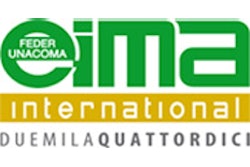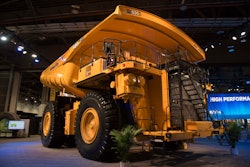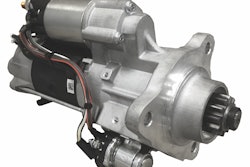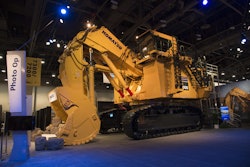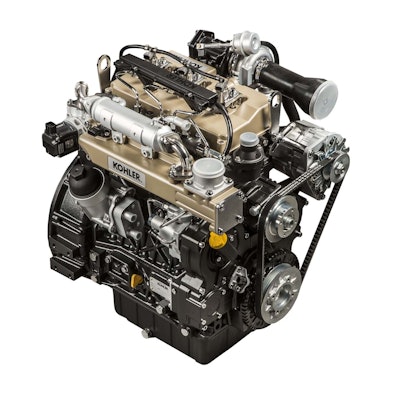
KOHLER Engines has developed new versions of KDI engines intended specifically for agricultural applications and will be exhibiting at EIMA 2016 with the intention of confirming its leadership in the field that was always dominated by Lombardini, now a totally integrated member of KOHLER group.
The range of KDI engines by KOHLER Engines is already the new technological benchmark for industrial applications in the range of powers from 37-100 kW. The rapid success of this innovative engine solution is the result of engineering choices that meet the specific needs of manufacturers and end users. Its small size, the best performance in its category, its modest fuel consumption and ease of installation, make this an engine that optimizes productivity and efficiency, reducing maintenance costs while ensuring compliance with any emission standards, from the most severe to the least restrictive, thanks to a flexible and innovative system of aftertreatment in its category.
Hot on the heels of the brilliant results achieved in the construction industry, KDI engines are taking up a new challenge: to be “The Game Changer” once again, but this time for manufacturers of agricultural machines by offering them specific versions of the KDI 1903, KDI 2504 and KDI 3404 models.
The starting point is its tried-and-tested "bedplate" architecture, whose superior strength and torsional rigidity are ideal for application on agricultural tractors where the engine is a structural part of the machine and has to cater for the considerable strain that is typical of these applications. The supporting structural oil pan with a central tunnel for the transmission shaft has been specifically designed for specialist tractors.
What’s more, the architecture with counter-rotating balancing shafts helps cut down on vibration. From the point of view of its dimensions and footprint, the basic specifications of KDI engines make them suitable for applications in the agricultural sector: their narrow profile helps them drive a more compact steering radius, significantly improving the maneuverability of the machine.
But the footprint is not the only element that helps simplify the installation of KDI engines. It has two auxiliary lateral power take offs (PTO, SAE A and SAE B), designed to pick up the most power possible from the engine, enabling perfect integration with the machine’s hydraulic system for effective powering of the accessories that are usually used, guaranteeing the interface with any type of transmission and ultimately reducing the space needed for the application.
This versatility is also enhanced by the provisions on the engine, enabling compressors to be fitted for handling the air-conditioning system and the air brakes circuit (optional).
The location of some of the components has also been optimized to meet the needs of agricultural machinery manufacturers. For example, the fan support has been placed at the top of the engine, increasing the distance of the center line of the cooling fan from the engine shaft. This makes it possible to take full advantage of the front PTO and use radiators with a narrow and high profile for optimized cooling, while making fitting easier given the usual spaces available in the engine compartment of tractors.
Alongside the optimization of the components and provisions, the power and torque curves of KDI engines have been optimized for optimum adaptation to the typical usage profiles of agricultural applications, obtaining power density levels that make them candidates as replacements for larger displacement engines. The latest generation, high pressure (2,000 bar) Common Rail injection system chosen for the range, and the electronic engine management logic that integrates perfectly with the electronics managing the end machine, offer the possibility to implement dedicated calibrations to meet any specific need. For agricultural versions, in particular, priority has been given to the response and speed of delivery along the entire torque curve, which makes for a machine with prompt operation whatever the conditions, especially near the power demand peaks. Another major feature is the choice of the common-rail system making a significant contribution to cutting down the engine’s operating noise, improving user comfort when it is running.
In light of these features, the KDI engines designed for agricultural applications also offer the same specifications as the rest of the range in terms of their modest consumption. Despite their generous delivery of power and torque, the agricultural versions are also particularly cost-effective to run, without penalizing the final performance of the machine in any way.
But the biggest challenge is to cater for the increasingly complex geography of emissions, thanks to the slim line and modular aftertreatment system (DOC, DOC+SCR and provision for integration of the DPF ahead of Stage V in 2020).
The various versions (KDI 1903, KDI 2504 and KDI 3404), with various calibrations, guarantee all the certifications in the range up to 100 kW required by the European Union (EU: Stage IIIA, Stage IIIB, Stage IV), North America (EPA: Tier 4 Interim, Tier 4 Final) and non EU countries (China and Korea: Tier III or equivalent).
The solution offered by KOHLER Engines also includes specially designed dual stage diesel filtering systems, making it possible to use low-quality diesel fuel without creating problems for the engine.
The conversion kits enable remapping of the ECU with the de-tiering of the engine on second-hand machines for sale in countries where there are no restrictions on exhaust emissions. This is a particularly exciting feature, creating interesting opportunities for the sale of second-hand vehicles.
The flexibility of the potential applications and accessories makes KDI engines the benchmark in the industrial field in the 37-100 kW range. Being based on a shared basic platform that can be readily adapted to cater for specific emission standards is extremely advantageous for all manufacturers, as they can design a single version of their machine for sale in several different markets that have specific emission levels.
It is no coincidence that KDI engines are already the choice of numerous leaders in their field.
The agricultural versions of KDI engines will be on show for visitors to EIMA 2016, in Hall 15 – Stand A17.




